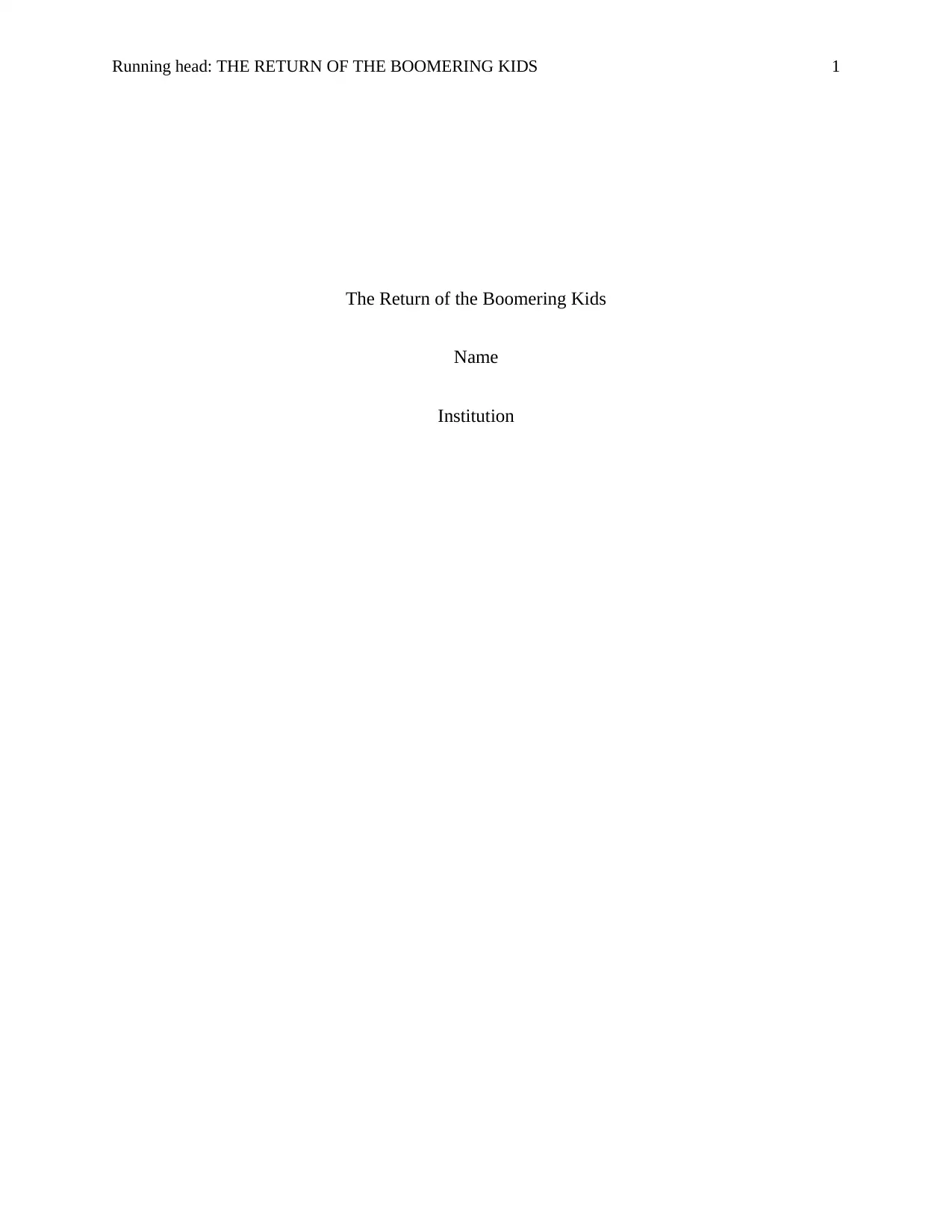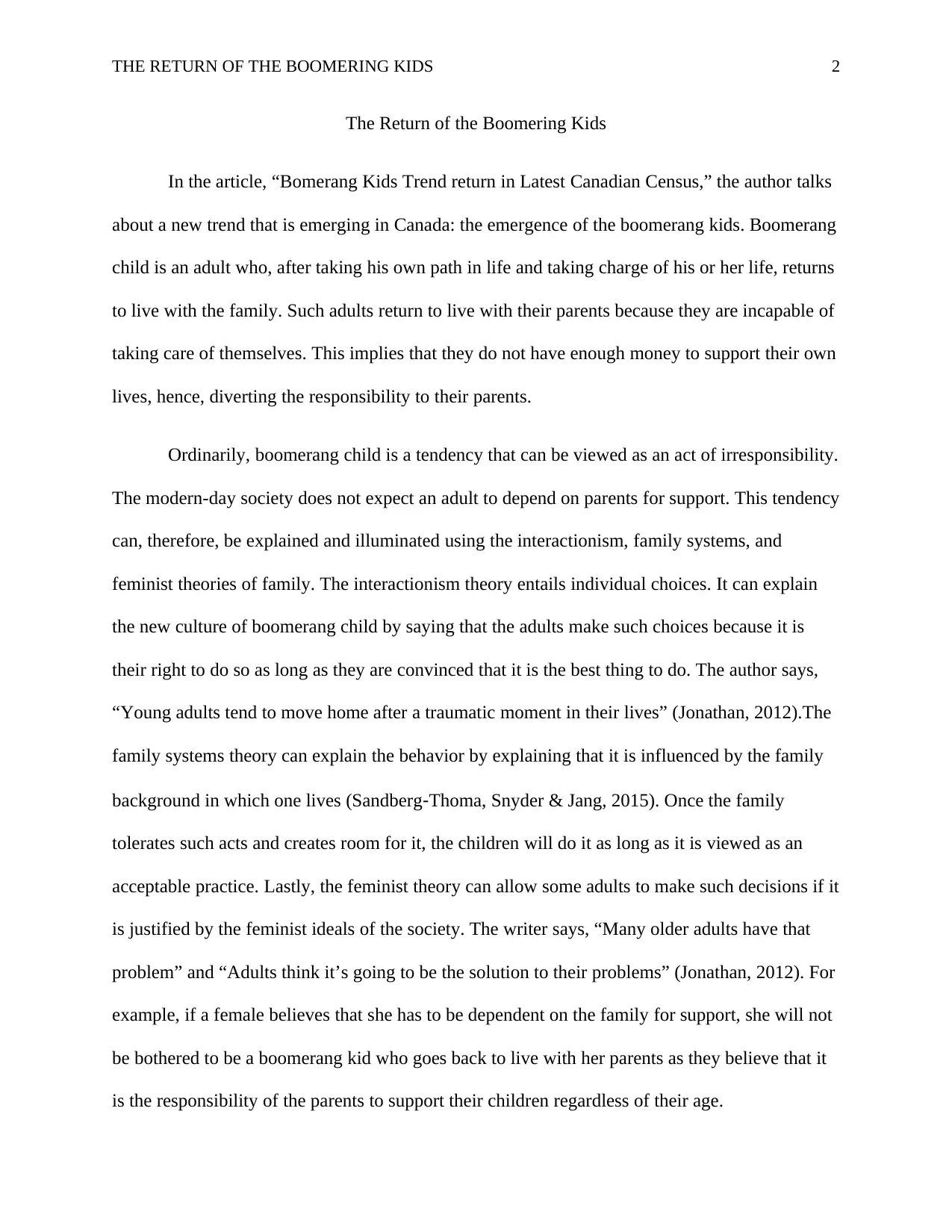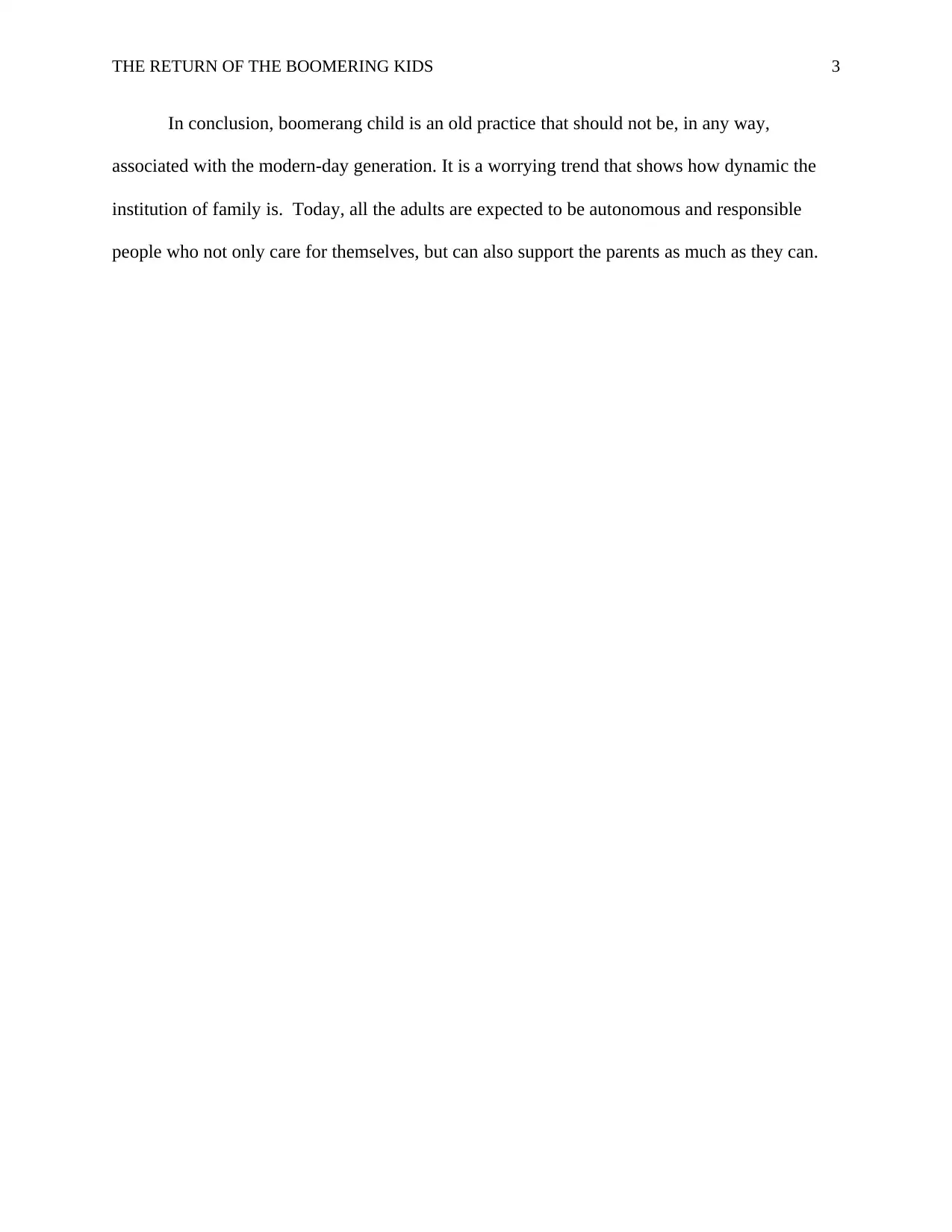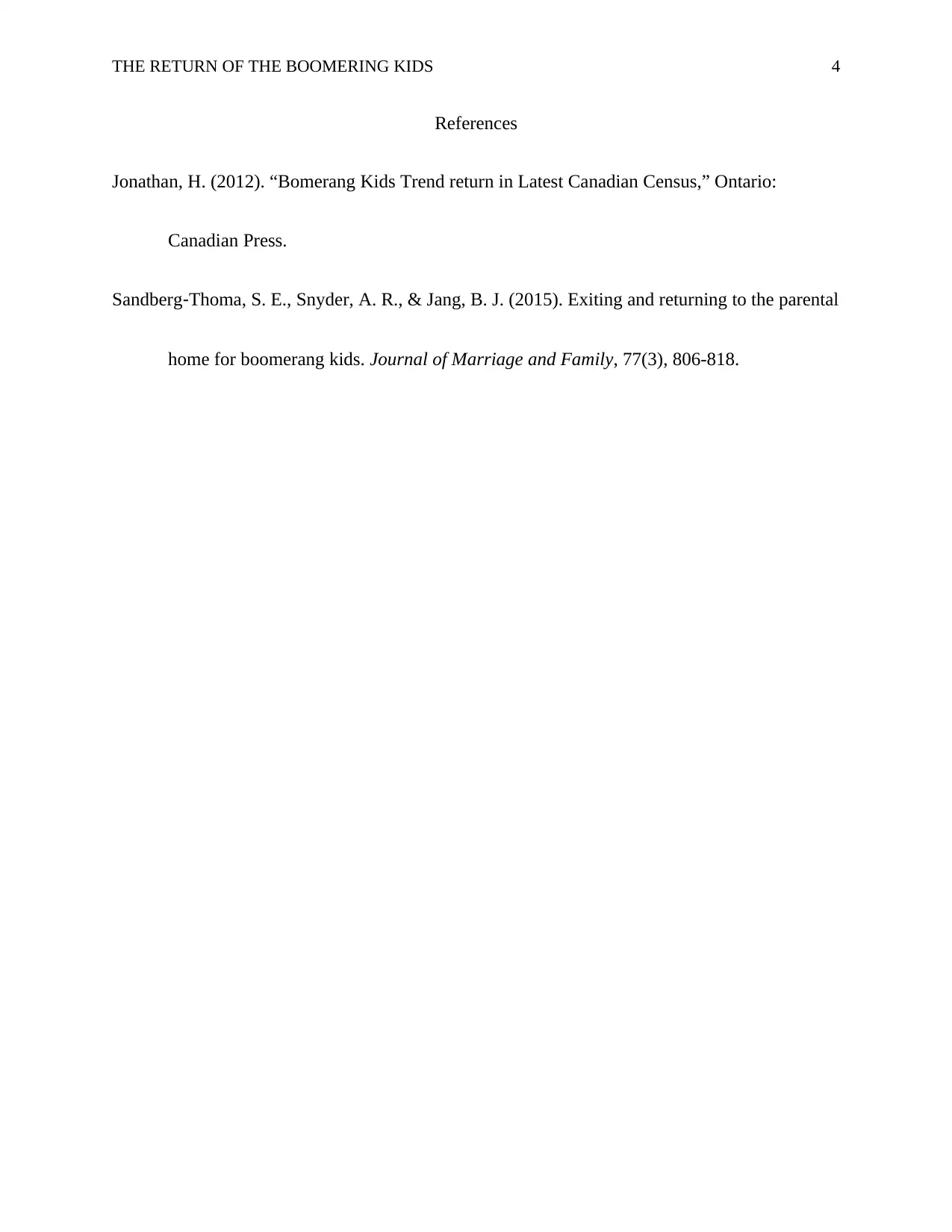The Boomerang Kids Trend: A Sociological Analysis of Modern Families
VerifiedAdded on 2023/03/31
|4
|506
|496
Report
AI Summary
This report provides a sociological analysis of the 'boomerang kids' trend, examining the phenomenon of young adults returning to live with their parents. The report explores the trend through the lenses of interactionism, family systems theory, and feminist theory. It highlights how individual choices, family backgrounds, and societal ideals influence this behavior. The report references relevant academic sources and discusses the implications of this trend on modern family structures and societal expectations, concluding that the 'boomerang kids' phenomenon challenges traditional notions of adulthood and independence. The report discusses the impact of this trend on the family unit and society at large, emphasizing the importance of understanding the underlying factors driving this shift in family dynamics. This analysis aims to provide a comprehensive understanding of the social and cultural forces shaping the lives of both the returning young adults and their families.
1 out of 4





![[object Object]](/_next/static/media/star-bottom.7253800d.svg)